Solar System Scientists Aren’t Convinced That Planet Nine Exists
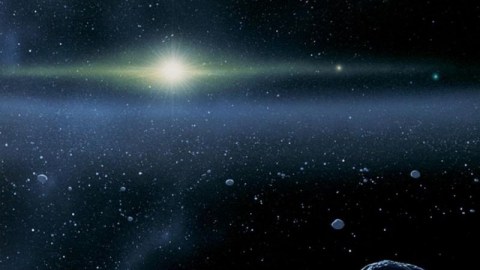
Any hypothesis, no matter how alluring, must be confronted with the full suite of data.
Our Solar System may be the closest part of the Universe to us as we look beyond Earth, but there are still plenty of surprises here in our own backyard. It took thousands of years before we understood how the planets orbited the Sun, and hundreds more before we discovered Uranus and Neptune. Today, we have the four inner, rocky planets, the asteroid belt, and the four gas giants with their moons and rings.
But there are tremendous unknowns that lie beyond Neptune. There’s so much more than merely Pluto, the comets, or even the entire Kuiper belt out there. The last few decades have revealed entirely new classes of objects, including ones that have mysterious, hard-to-explain orbits. Some scientists claim that these objects point to “Planet Nine,” a hypothetical large planet far beyond what we can see. But, despite what you’ve likely read, most scientists aren’t convinced. Planet Nine may not exist. Here’s the story of why.
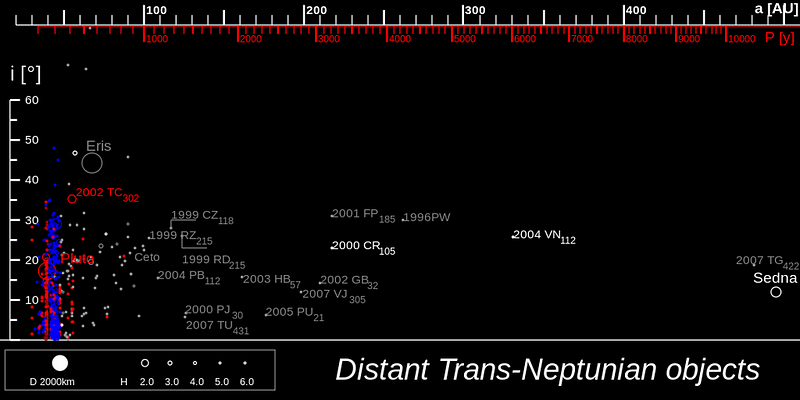
In the early 1990s, scientists found the first Solar System object beyond Neptune that wasn’t a part of the Plutonian system. As our telescopes improved in both magnitude (how faint they can see) and in field-of-view (how much of the sky they can see), more and more objects began to appear.
Most of them had Pluto-like orbits: their closest approach to the Sun takes them relatively close to Neptune. While Neptune is 30 AU (where 1 AU, an Astronomical Unit, is the average Earth-Sun distance) away, almost all of the objects beyond Neptune come within 50 AU of the Sun. They’re all classified as part of the Kuiper belt. Beyond that is the “Kuiper cliff,” since the number of objects beyond that falls off dramatically.
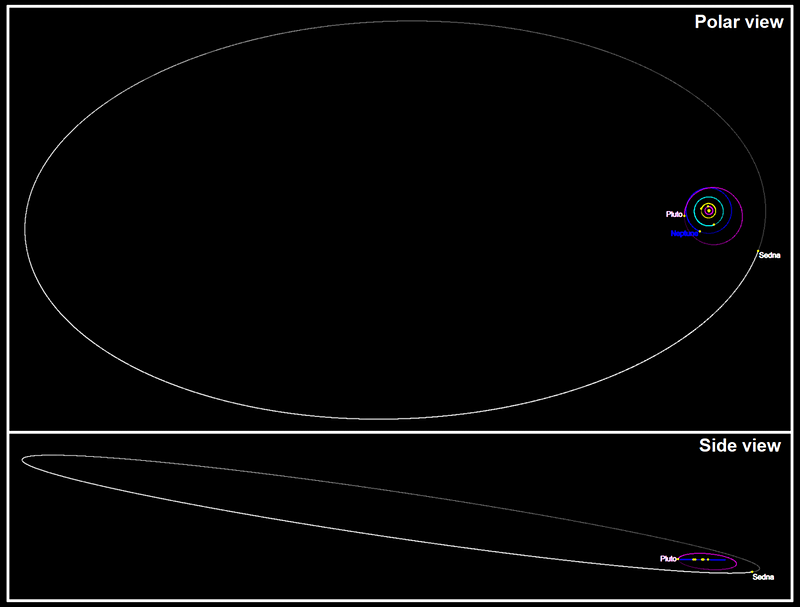
But we’ve discovered objects that aren’t part of the Kuiper belt in the same way. Sedna, discovered in 2003, was the first fascinating object to fit into this category. Scientists Mike Brown, Chad Trujillo, and David Rabinowitz found a large body about 1000 km across. It’s known now to be a dwarf planet, but what really made it incredibly interesting was its orbit. At its closest, it gets within 76 AU of the Sun, but at its most distant, it’s nearly 1000 AU away.
It takes more than 10,000 years to make a single revolution around the Sun, and could in no way have been perturbed by Neptune. Somehow, it got its bizarre orbit another way. In the discovery paper, the authors put forth the possibility that a yet-undiscovered planet could have been the cause.
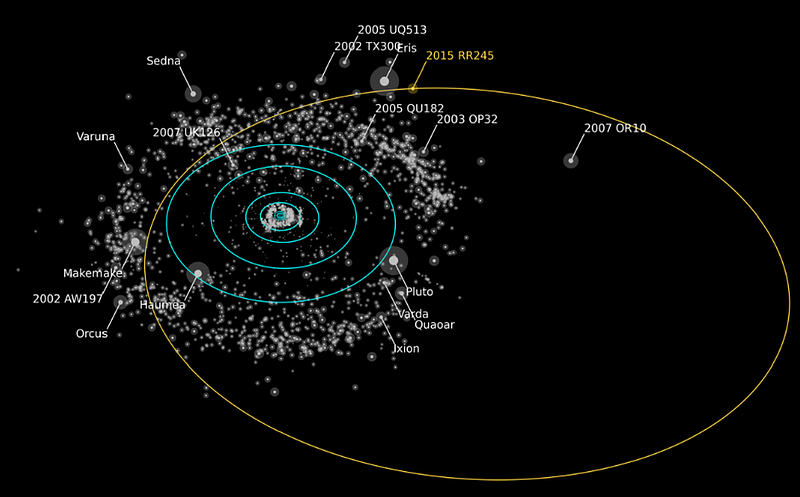
In the subsequent years that have passed, particularly in the 2010s, a large number of these bizarre Solar System objects have been found. Led by Trujillo and Scott Sheppard, a small but significant number of these distant Trans-Neptunian Objects have been found to have similar orbital properties, now classified as extreme TNOs. While we may have thousands of objects that enter the Kuiper belt, there are more than a dozen that have these elongated orbits that never get too close to Neptune.
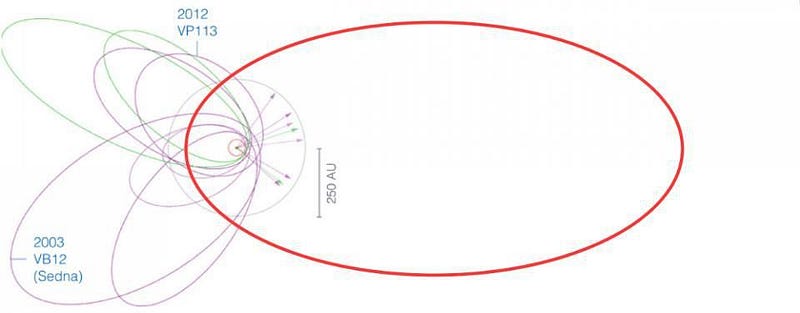
It was Trujillo and Sheppard that first proposed, in 2014, the idea that a large, planet-like object could be causing these orbits. Of the extreme TNOs that had been discovered as of 2014-to-2016, they had orbital properties that all seemed to be correlated. And perhaps, they argued, that correlation could be due to a large, massive object perturbing them, creating these otherwise difficult-to-explain orbits. In 2016, Konstantin Batygin and Mike Brown named the hypothetical object: Planet Nine.
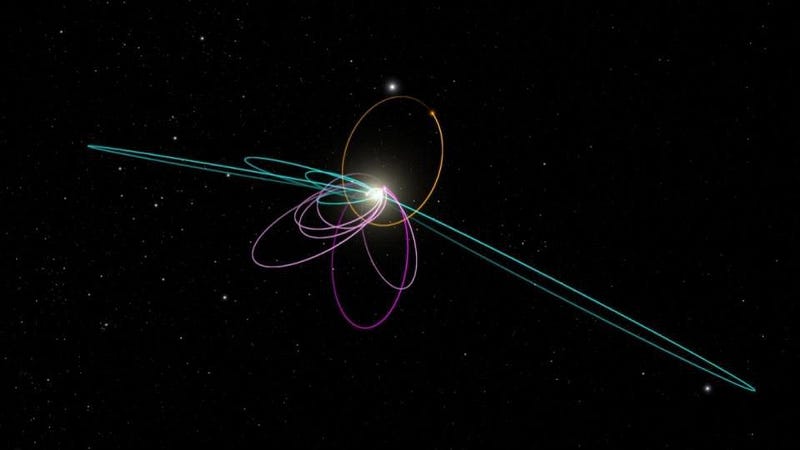
But it’s not a slam-dunk. Despite the fact that Batygin and Brown analyzed the objects they knew of and determined there was only a 1-in-10,000 chance that they’d be randomly oriented as we observed, there’s a big risk that this incomplete data set points to a false conclusion. The objects that Sheppard and Trujillo have found were discovered with a set of surveys that were subject to a large number of biases.
- They could only see a specific part of the sky.
- They only looked at objects with at least a specific brightness.
- They ignored every object that came too close to Neptune.
- And they looked in-or-near of the plane of the Solar System.
In other words, and this is the most important overlooked fact, the surveys that provide the strongest evidence for Planet Nine were deliberately under-sensitive to a large class of objects that could have contradicted the Planet Nine hypothesis.
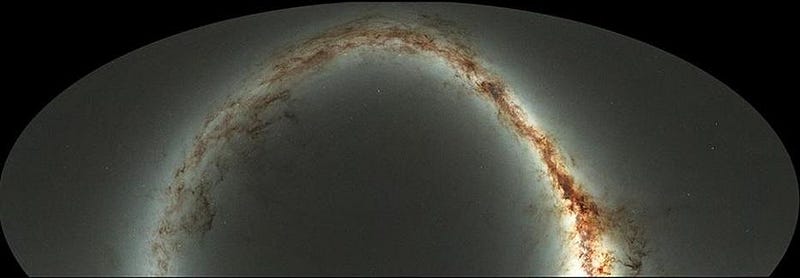
But other surveys make different assumptions. They use different methods, different telescopes, and obtain different sky coverage. The OSSOS (Outer Solar System Origins Survey) data set, for example, didn’t ignore objects with perihelia that brought them close to Neptune, and surveyed approximately 0.3–0.4% of the sky.
When they looked for Sedna-like objects, they found a total of nine. That might not seem like a lot, but it’s more than the meager six that were known in 2016 when the moniker “Planet Nine” was coined. And when these OSSOS objects, with a different set of biases from other work, were analyzed for how their orbits were distributed, they were consistent with total randomness. No Planet Nine was necessary at all.
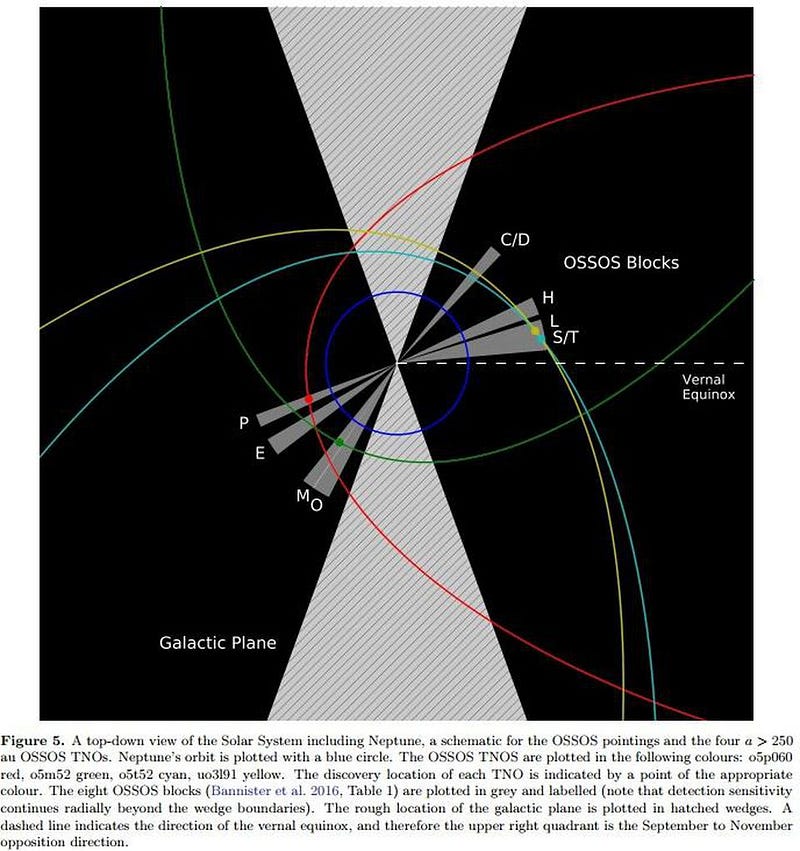
And physically, that’s reasonable! There are four major possibilities that could explain not only Sedna, but the slew of additional extreme TNOs we’ve since found that never come very close to any of the major planets in our Solar System. They are:
- Galactic tides could have perturbed these orbits, slowly elongating a few of them and bringing them close to Neptune over hundreds of millions of years.
- The fly-bys of other stars or rogue planets in our galaxy that pass near our Solar System, perturbing these objects and creating these elongated orbits.
- A large number of dwarf planets in the outer Solar System that were present in the early stages, creating these extreme TNOs, but have largely since been ejected.
- Or, it could be Planet Nine (or even two planets, Nine and Ten), lurking out there and kicking these extreme TNOs into their current orbits.
As always, it will be more data, and superior-quality data, that will teach us what’s true about our Universe.
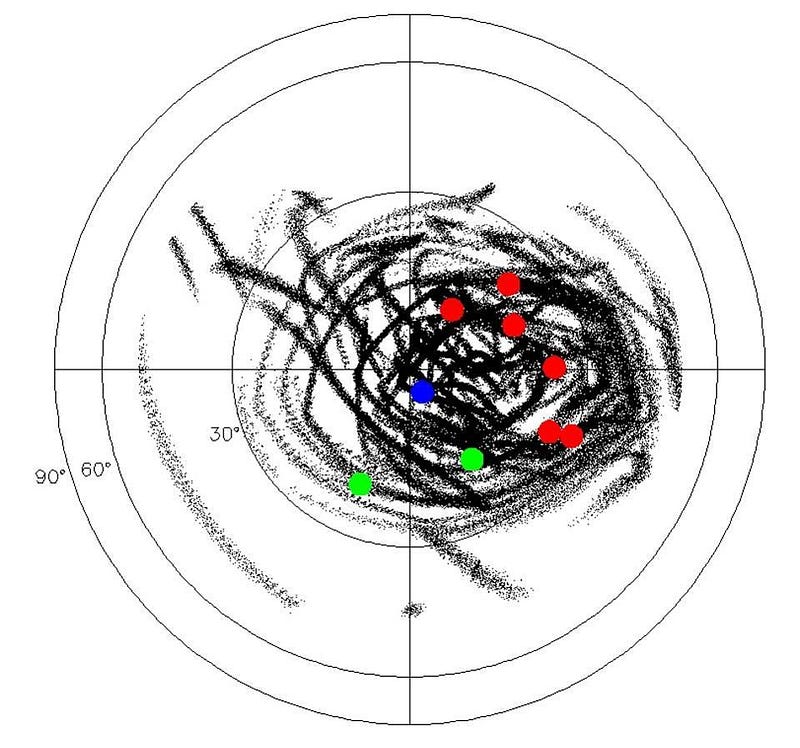
I spoke with Michele Bannister, one of the leads of OSSOS, as to what could settle the controversy over the existence (or non-existence) of Planet Nine. Barring a direct detection, it could still be possible to either declare victory or defeat for the Planet Nine scenario as follows:
The direct pieces of evidence will be finding more Trans-Neptunian objects in surveys with well-characterized biases. [The Dark Energy Survey’s] target is sky that is well away from the plane of the Solar System. So, it does high-inclination orbits as its specialty. This survey has been looking at about 5,000 square degrees of the southern hemisphere sky. It’s a nice, big area; it’s well away from the ecliptic; it’s a very different set of orbits that it can potentially find.
The full, hour-long interview I had with Michele is available here, and I encourage you to listen and learn as much as possible about the Solar System beyond Neptune.
If you had a true, large planet out beyond Neptune, you’d expect a large number of these high-inclination objects with very eccentric orbits; the number of extreme TNOs found by surveys like the Dark Energy Survey or the future LSST (which will get 18,000 square degrees, or nearly half of the sky) should tell us whether Planet Nine is in or out.
Just a few weeks ago, a new object was reported as further strengthening the case for Planet Nine, but this appears to be another case of “not so fast.” That object was found from the same surveys and techniques that the other pro-Planet Nine objects came from, which means they were subject to the same biases. On the other hand, surveys with different biases don’t indicate any need for Planet Nine at all.
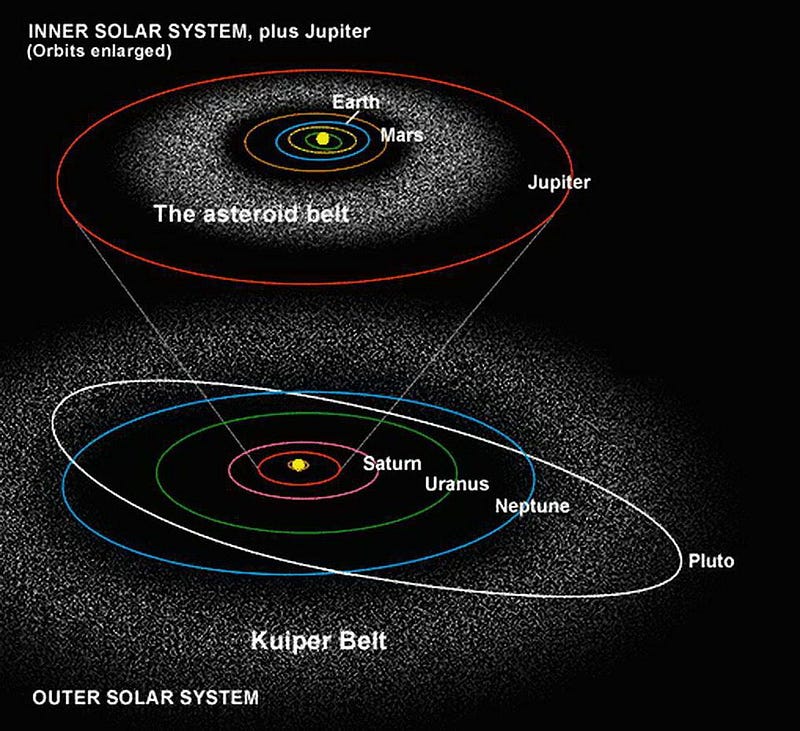
When all you have is a hammer, everything looks like a nail. If you look in such a way that you’re biased towards finding objects that support Planet Nine and away from finding objects that don’t support it, that doesn’t mean Planet Nine exists; it means you need better data before you can know what’s going on. We need to know what’s going on with not just Planet Nine, but the Solar System beyond the Kuiper belt in general.
With new surveys, better sky coverage, and superior data on the way, the next decade of astronomy should see us not only solve the mystery of what (if any) large worlds lie beyond Neptune, but can help us understand how solar systems form and evolve in general. There are a slew of mysterious objects out there, beyond not only Neptune but beyond our present ability to comprehend. With deeper, wider-field surveys on the way, this is one puzzle whose solution will fascinate astronomers no matter which idea is correct.
Ethan Siegel is the author of Beyond the Galaxy and Treknology. You can pre-order his third book, currently in development: the Encyclopaedia Cosmologica.





